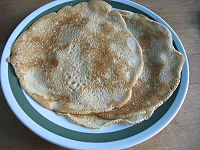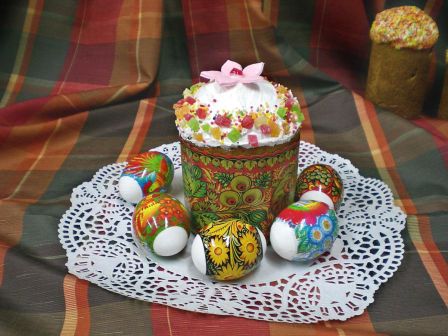Controversial Stalin monument unveiled in
Russia’s Sakha-Yakutiya republic
Published time: May
08, 2013 09:52
Edited time: May 08, 2013 12:12
FacebookTwitterRedditStumbleUponGoogle+Tumblr
Russian war veterans in the republic of
Sakha-Yakutiya believe that Joseph Stalin’s achievements as military commander
of the Soviet Union deserve to immortalized in a bust statue, regardless of the
controversy that surrounds the late leader.
The veterans, supported by the local branch of
the Communist Party of the Russian Federation, collected money and material for
the bust, and a local diamond mining company agreed to place the monument near
its office in the republic’s capital, Yakutsk.
Local authorities expressed no objections to the
initiative, the office of Yakutsk city Mayor Aysen Nikolayev reported.
At the opening ceremony, Communist Party
activists called on the public to judge historic figures by the results of
their actions, not by emotion. They also promised to continue the fight for
“the free state, free education and equality of the people.”
The push to build the Yakutsk monument to Stalin
began about six years ago. At the time, the Communist Party filed a request
with regional authorities to build the statue to mark the 90th anniversary of
the October Revolution. Former Yakutsk Mayor Yuri Zabolev staunchly opposed the
move, vowing there would be no monuments to Stalin in Yakutsk while he was in
office.
In May 2012, Nikolayev was elected mayor and
Zabolev stepped down. However, the bust of Stalin that was unveiled on
Wednesday is actually the second monument to Stalin built in the republic of
Yakutia in the 21st century: In 2005, a bust of the Soviet leader was erected
on the Victory Square in the town of Mirny.
Controversies around Stalin’s name and
personality are constantly raised in Russia, and almost always become widely
debated topics among the public and media.
Supporters of Stalin cite the dictator’s role in
the early industrial and scientific development of the USSR, as well as the
Russian victory in World War II achieved under Stalin’s command. Opponents
point to Stalin’s notorious programs of political repression, his apparent
disregard for human casualties in economic reform and in war, and his infamous
cult of personality that was denounced even by the Soviet Communists soon after
the leader’s death.
The most well-known PR stunt by Stalin
supporters is likely the ‘Stalin buses’ story – an initiative by several activists who put
Stalin’s portraits on St. Petersburg city buses in 2010 to mark the World War
II victory anniversary. The event was not sanctioned by authorities, meaning
the portraits were placed as advertisements, but it nevertheless sparked heated
debate.
In 2011 and 2012, other Russian cities launched their own ‘Stalin
buses,’ again drawing widespread attention from bloggers and mass media.
However, public interest has apparently dwindled this year, as the buses only
appeared in three cities in early February, as the country marked the
anniversary of the Battle of Stalingrad.
Perm-anent marker: Communists defend
Stalin billboards in Urals city
Published time:
February 19, 2015 10:21
FacebookTwitterRedditStumbleUponGoogle+Tumblr
Some residents of the central Russian city of
Perm have asked the authorities to remove 10 billboards with Stalin’s
portraits, put up by the Communist Party, claiming the law only allows the
medium to be used for commercial advertising.
The billboards, which remain on Perm’s streets,
feature the photo of the Soviet dictator together with the famous quote, “Stalin
found Russia working with wooden plows and left it equipped with atomic piles,”
attributed to Winston Churchill. The Communist Party says on its website that
the placement was timed with the 135th anniversary of Stalin’s birth and the
70th anniversary of the Soviet Union’s victory in WWII.
The outdoor campaign started two months ago, but
the scandal erupted only in mid-February as some unnamed vigilant citizens
reported about it to the Federal Anti-Monopoly Service – the state agency that
oversees how laws on advertising are observed. The essence of complaints is
that billboards can only be used for commercial advertising or promotion of
charity projects, while the sites in question do not fall under either
category.
Officials told local mass media that they were
now trying to establish who ordered the campaign in order to tell them to stop
it.
The Perm branch of the Communist Party replied
with an emotional statement, accusing their opponents of hypocrisy and noting
that all information about the sponsors of the campaign can be found on the
billboards themselves, in the regional Communist newspaper and on the party’s
website.
The activists also noted that similar campaigns,
like the one promoting St. Valentine’s Day, had never caused any objections
despite the fact that they also do not advertise any particular product or
charity. The Communists’ reply ends with Stalin’s own words: “I know that
after my death piles of garbage will be carried to my grave, but the winds of
history will swipe it away without any mercy.”
A similar situation took place in the southern Russian city of
Voronezh in 2008. Local mayor ordered the removal of 10 billboards with
Stalin’s portraits for the same reason just three days after they were put up.
Local communists complained to the prosecutor’s office and claimed that the law
enforcers had taken their side, but removed the ads anyway, saying that the
campaign had already ended, as planned.


 https://blogger.googleusercontent.com/img/b/R29vZ2xl/AVvXsEi48rncuuhqyv6kn4qaXDeaHHXhrRuntbix1gUwWcBfdB7lwOtMlOqeN2GTQ-VksSDlkhNaros727W_uO-UV0_U1i6Nz5E-FfwnNSxs5QkZjbZRS2HA1g3PKXaz01pmfAy8sQp5QFZVQ8M/s1600/russia+food,%2B%2B113-001.jpg
https://blogger.googleusercontent.com/img/b/R29vZ2xl/AVvXsEi48rncuuhqyv6kn4qaXDeaHHXhrRuntbix1gUwWcBfdB7lwOtMlOqeN2GTQ-VksSDlkhNaros727W_uO-UV0_U1i6Nz5E-FfwnNSxs5QkZjbZRS2HA1g3PKXaz01pmfAy8sQp5QFZVQ8M/s1600/russia+food,%2B%2B113-001.jpg









